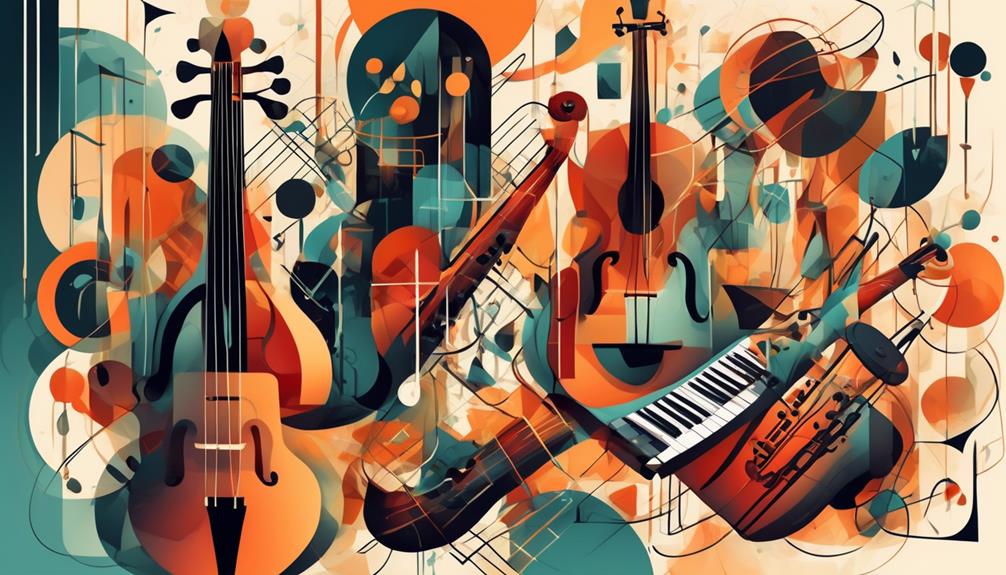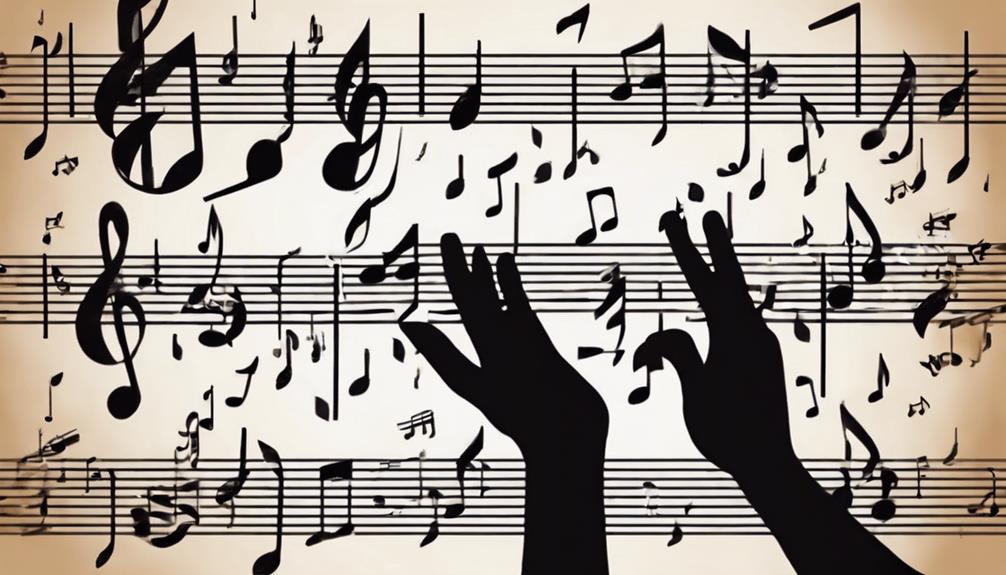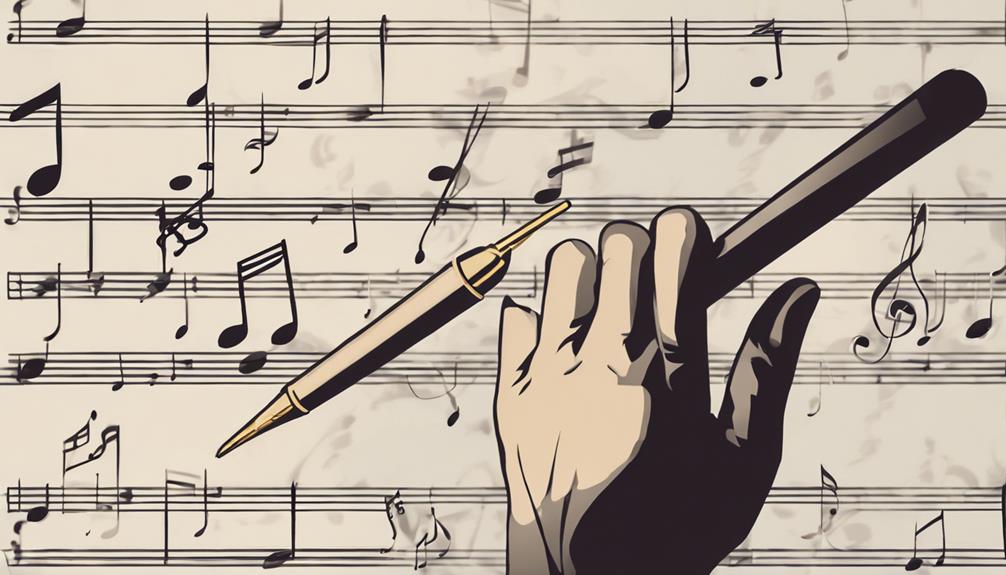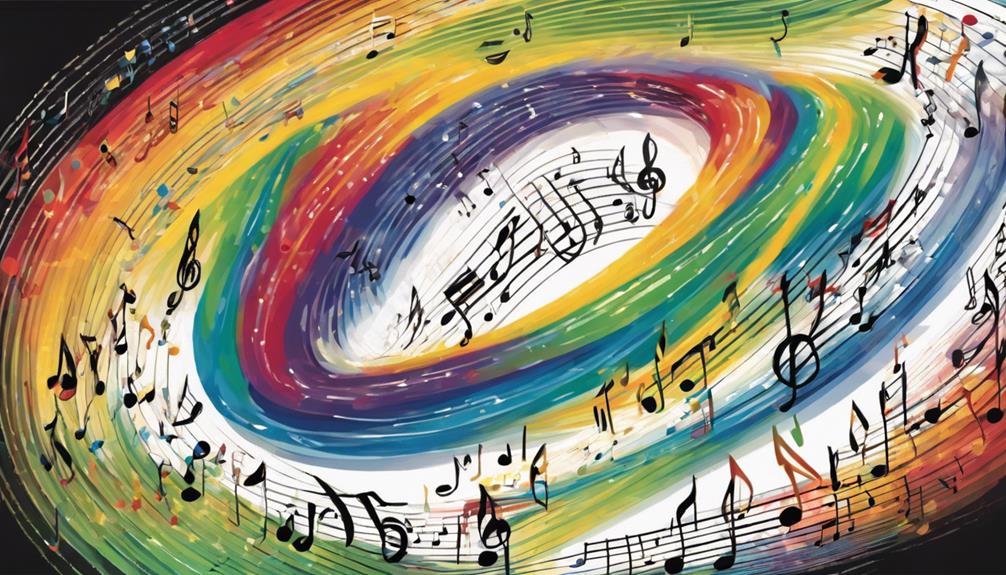No products in the cart.
Nearly 80% of popular music hits rely on the same four-chord harmonic progression, a testament to the power and simplicity of harmony in music. You might wonder why these patterns resonate so deeply with listeners and how they can evoke such varied emotions.
As you begin your journey into the realm of harmonic structures, you’ll discover that understanding the basics of chords, progressions, and key signatures isn’t just about following a set of rules; it’s about unlocking a language that has been shaping the soundtrack of our lives for centuries.
In this guide, you’ll learn to identify and construct these musical building blocks, but more importantly, you’ll start to grasp how they can be manipulated to create something truly your own. Stick with this exploration, and you’ll find the tools to not only comprehend the music you love but to craft your melodies and harmonies that could, one day, resonate with audiences around the world.
Contents
hide
Key Takeaways
- Harmony enriches melodies by layering notes and creating tension and resolution.
- Chords are the pillars of harmony, providing context for melodies.
- Chord progressions guide the harmonic narrative and create a sense of journey.
- Key signatures anchor the harmonic structure and facilitate communication among musicians.
Understanding Basic Harmony
Harmony, the soul of music, enriches melodies by layering notes to evoke emotion and structure within a composition. As you delve into basic harmonic principles, you’ll discover that harmony isn’t just a backdrop; it’s a dynamic force that shapes the emotional and expressive qualities of music.
When you analyze harmonies, you’re examining how these simultaneous notes interact to define the tonal center—the gravitational pull of the music—and how they can introduce tension, longing for resolution.
Chords, constructed from alternate scale degrees, are the pillars of harmony. They provide the necessary context for melodies, like a canvas for a painter. Consonant chords are the building blocks, offering stable and pleasing harmonies, while dissonant chords challenge the ear, creating a sense of tension.
Your harmonic analysis skills will grow as you learn to discern these relationships and their impact on the overall musical narrative.
Chords and Their Functions
In exploring the functions of chords, you’ll find that they not only establish the harmonic foundation of a piece but also guide the listener through a journey of tension and resolution. Types of consonant chords, which include major and minor triads, provide a sense of stability and restfulness. These chords are the bedrock of harmony, creating a pleasing sound that’s easy on the ears.
When you encounter resolving dissonant chords, you’re experiencing a deliberate injection of tension into the music. Dissonant chords, such as diminished or augmented triads, yearn for resolution. They create a sense of instability that naturally leads the listener towards a resolution, typically through a return to consonance. This push-and-pull effect is essential in music; it’s what makes the resolution so satisfying.
Chords are constructed from various degrees of the scale, with the tonic being the most stable and the dominant leading towards it. This dominant-to-tonic movement is the cornerstone of Western music, embodying the essence of tension and release.
Progressions and Movements

Understanding chord progressions allows you to grasp how a series of chords can weave a narrative within a piece, guiding you through its harmonic landscape. At the core of these progressions lies the interplay between harmonic tension and release, a dynamic that gives music its emotional power.
Tonic chords serve as your musical ‘home,‘ offering a sense of stability and resolution. In contrast, dominant chords introduce tension, urging a return to the tonic. This push and pull create the most traditional tonal progressions, which are foundational in Western music.
Predominant chords act as a bridge in this journey, setting up the dominant chords. They enrich the progression, making the eventual resolution to the tonic more satisfying.
However, not all musical narratives follow this path. Modal progressions, which employ modes rather than the major and minor scales, present a different kind of harmonic story. These progressions often forgo the classic tension and release for a more ambiguous, less resolved sound. This can lead to innovative sonic experiences, resonating with an audience eager for exploration.
Modulation adds a twist to your harmonic tale, shifting the key and expanding the emotional palette. It’s a tool that, when used skillfully, can take your listeners on an unexpected harmonic detour, refreshing the narrative of your piece.
The Role of Key Signatures
As you explore the narrative of chord progressions, it’s crucial to recognize how key signatures anchor the harmonic structure, setting the stage for all subsequent musical action. They’re more than just a set of symbols; key signatures are the roadmap for both composers and performers, guiding the melodic and harmonic journey of a piece.
Consider the importance of key signatures in improvisation. These are a few key aspects:
- Framework for Creativity: Key signatures provide the tonal boundaries within which you can innovate, ensuring that your improvisations feel coherent and connected to the piece’s overall structure.
- Predictive Tool: They allow you to anticipate the harmonic landscape, making real-time decisions on where to take your melody.
- Efficient Communication: By setting a clear tonal center, key signatures enable you to quickly adapt and collaborate with other musicians without verbal instruction.
- Facilitating Modulation: Key signature modulation techniques are essential for creating dynamic shifts in your music, leading to new emotional territories and keeping the listener engaged.
Understanding key signatures isn’t just about playing the right notes; it’s about expressing the intended emotional narrative of the music. Mastery here is foundational to your growth as an innovative musician.
Varieties of Harmonic Systems


You’ll discover that the landscape of harmonic systems is as diverse as the cultures and eras that shaped them, each with its own set of rules and sonic textures. As you delve into this rich terrain, you’ll encounter the familiar Western tonal harmony with its chord progressions and the concept of a tonal center. However, the harmonic universe extends far beyond this common framework.
Here’s a glimpse at how these systems differ:
| System | Characteristics |
|---|---|
| Western Tonal | Chord progressions, functional harmony, tonal center |
| Jazz | Extended chords, altered chords, improvisation |
| Non-Western | Modal systems, microtonal scales, unique intervals |
Jazz harmony, for instance, is known for its complex and colorful structures arising from extended and altered chords, underpinned by improvisation. Meanwhile, non-Western traditions might use modal systems and microtonal scales, offering a distinct palette of sounds not typically found in Western music.
Each system offers unique principles and tonal characteristics. Modal systems, for instance, provide different “flavors” or moods by emphasizing certain scale degrees. Microtonal scales unlock intervals smaller than the semitones of Western music, leading to innovative sounds that challenge conventional Western ears. As you explore these systems, you’ll find that each harmonious structure opens the door to new creative possibilities.
Applying Harmony in Composition
Harnessing the power of harmony in your compositions can transform a simple melody into a rich, emotionally resonant piece. Exploring different harmonic textures isn’t just about adding chords; it’s about crafting a tapestry of sound that enhances your musical narrative. When incorporating harmony in improvisation, you’re not just playing notes; you’re shaping the emotional contour of your piece in real-time.
To integrate harmony effectively, consider the following:
- Identify the Emotion: Choose chords that reflect the mood you intend to convey. Major and minor triads are fundamental but explore seventh chords, extended harmonies, and modal interchanges for nuance.
- Experiment with Texture: Use different voicings and inversions. A single chord can sound vastly different depending on the arrangement of notes and instrumentation.
- Apply Tension and Release: Dissonant chords can create tension; resolve them to consonant chords for a sense of release. This dynamic can be a powerful storytelling tool in your compositions.
- Improvise with Intent: When incorporating harmony in improvisation, listen and react. Harmonic choices should feel intentional and contribute to the progression of the piece.
Frequently Asked Questions
How Does Harmonic Structure Vary Across Different Genres, Like Jazz, Classical, and Pop Music?
Harmonic structure, notably chord progressions, shifts with genre dynamics. In jazz, you’ll find complex chords; classical favors structured progressions, while pop often uses repetitive, catchy sequences to appeal to a broad audience.
Can Harmonic Theory Be Applied to Electronic Music, Which Often Uses Non-Traditional Sounds and Scales?
Yes, you can apply harmonic theory to electronic music, embracing synthetic harmonies and scale experimentation to innovate and shape the genre’s evolving soundscape with analytical precision and a desire for musical innovation.
How Does the Human Brain Perceive and Process Harmonic Structures, and How Does This Affect Our Emotional Response to Music?
Your brain’s cognitive resonance with harmonic structures can deeply influence emotional triggers, shaping how you react to music emotionally, and potentially driving innovation in how we understand and create emotionally resonant soundscapes.
What Are Some Common Misconceptions About Harmony That Beginners Might Have?
You might think harmony’s simple, but it’s nuanced. Beginners often misconceive chord complexity for chaos, not realizing how structured dissonance can innovatively evoke profound emotions. Harmony’s intricacies are pivotal in music’s emotive power.
How Has the Approach to Teaching Harmonic Structures Evolved With the Advent of Modern Music Technology and Software?
Modern music technology and software have transformed pedagogical strategies; you’ll find harmony software enables interactive learning, fostering innovation in understanding complex harmonic concepts.
Conclusion
Now you’ve dipped your toes into the vast ocean of harmony, grasping the roles of chords and their movements within key signatures.
You can identify different harmonic systems and apply them to craft compelling compositions.
Remember, harmony is the backbone of musical storytelling.
Keep experimenting with these structures, and you’ll not only enrich your creations but also deepen your appreciation for the nuances of sound that resonate in every piece of music you encounter.




